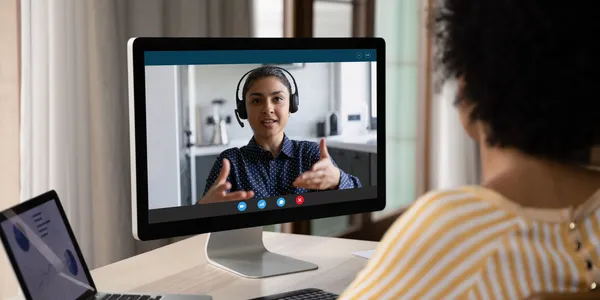Understanding Live Sales Coaching
Live sales coaching is an interactive approach that empowers sales professionals to improve their performance while they’re actually selling. Unlike pre-recorded training sessions or workshops that rely on theory and post-call analysis, live sales coaching provides immediate, actionable feedback during real-time conversations. This enables sales representatives to make adjustments on the spot—fine-tuning their communication, tone, and confidence while interacting with clients. Live coaching brings together practical experience and instant mentorship, creating a powerful learning environment where growth happens in real-time.
What makes this method stand out is its adaptability. A skilled coach can observe how a salesperson handles objections, presents a product, or builds rapport, and then guide them to enhance their delivery without losing authenticity. Over time, this kind of learning builds muscle memory, improving both efficiency and empathy. The power of live sales coaching lies in its immediate application—it doesn’t just teach sales theory; it transforms behaviors as they occur, ensuring measurable and lasting improvement.
The Power of Real-Time Feedback in Sales Growth
Feedback is one of the most powerful tools in professional development, and when it’s delivered instantly, its impact doubles. In the fast-paced world of sales, timing matters. Real-time coaching ensures that feedback is relevant, contextual, and tied directly to the salesperson’s actions in the moment. This type of learning environment accelerates growth because mistakes can be corrected immediately, and positive behaviors can be reinforced as they happen. It bridges the gap between theory and execution.
When a coach intervenes during a live call, they can help the salesperson adjust their pitch, refine their listening skills, or respond more effectively to objections. The result is not only improved performance on that particular call but also enhanced skills that carry over to future conversations. Sales professionals who experience live feedback often feel more supported and motivated, as they receive guidance in a constructive and non-judgmental way. Real-time feedback turns every client interaction into a learning opportunity, building confidence and competence simultaneously.
Essential Components of Effective Live Sales Coaching
For live sales coaching to be effective, it must be structured and intentional. It’s not just about observing calls—it’s about creating a collaborative atmosphere where learning feels natural and productive. Several key components make this possible:
- Active listening: Coaches need to pay close attention to tone, pacing, and word choice.
- Personalized guidance: Every sales representative has unique strengths and weaknesses that require tailored advice.
- Technology integration: Tools like live call monitoring and analytics software help track progress in real time.
- Constructive communication: Feedback should be clear, kind, and focused on growth rather than criticism.
When these elements align, live sales coaching becomes a catalyst for transformation. It helps sales professionals recognize their blind spots and replace ineffective habits with strategies that convert more leads. Moreover, it builds trust between coach and salesperson, creating a culture of accountability and continuous learning.
How Technology Enhances Live Sales Coaching
Modern technology has revolutionized the way live sales coaching works. With advanced tools such as AI-powered analytics, CRM integrations, and call recording software, coaches can now provide data-driven insights that enhance learning. These tools allow real-time observation of conversations and instant feedback through dashboards and chat tools. They also help identify trends, track progress, and ensure consistency across sales teams.
Some of the most effective tools for live sales coaching include:
- AI call analysis software that detects tone, pacing, and sentiment.
- CRM integration platforms that align coaching feedback with performance data.
- Screen-sharing and live chat support to help managers intervene discreetly during client interactions.
Technology doesn’t replace human connection—it enhances it. AI can identify areas of improvement, but only a skilled coach can interpret these insights with empathy and provide tailored advice. The future of live sales coaching lies in combining technology’s precision with the emotional intelligence of human mentors, creating a balanced system that boosts both performance and morale.
Building a High-Performance Sales Culture Through Live Coaching
A thriving sales team isn’t built overnight; it’s cultivated through consistent training, motivation, and support. Live sales coaching plays a crucial role in shaping a culture that values growth and accountability. When team members receive live guidance, they become more aware of their communication style and customer interactions. Over time, this fosters a culture of self-improvement and collaboration.
A strong coaching culture encourages peer learning, where experienced reps help newer team members refine their techniques. Managers can use live sales coaching to align individual goals with company objectives, ensuring everyone is working toward the same targets. Metrics such as conversion rates, call duration, and customer satisfaction can help measure progress, making success tangible. This approach turns sales coaching from a one-time event into an ongoing cycle of development that continuously drives team excellence.
Common Challenges and How to Overcome Them
While the benefits of live sales coaching are undeniable, implementing it effectively can come with challenges. Some sales representatives might feel nervous being observed during calls or fear negative feedback. Others may struggle to balance coaching time with their busy schedules. Overcoming these challenges requires clear communication, empathy, and planning.
Here’s how organizations can address these issues:
- Emphasize that coaching is meant for growth, not judgment.
- Start with short, supportive sessions to build trust and comfort.
- Provide recognition for improvement to reinforce motivation.
- Offer flexible scheduling options for remote or hybrid teams.
By addressing resistance early and creating a supportive environment, live sales coaching can become a source of empowerment rather than anxiety. The focus should always remain on helping sales professionals reach their full potential.
Practical Steps to Implement Live Sales Coaching in Your Organization
Implementing live sales coaching begins with identifying existing gaps in performance and determining which areas need improvement. Start by conducting an honest evaluation of current sales practices and communication methods. Once these areas are identified, develop a structured coaching plan that aligns with your company’s goals.
Practical steps include:
- Selecting the right coaching tools and platforms.
- Training managers or hiring certified sales coaches.
- Scheduling regular sessions for consistent feedback.
- Encouraging self-assessment and goal setting among team members.
Implementation doesn’t have to be complicated; it simply needs consistency. With commitment and the right structure, businesses can build a coaching framework that strengthens performance across every level of their sales organization.
Measuring the Impact of Live Sales Coaching
One of the biggest advantages of live sales coaching is its measurable impact. Unlike traditional training programs, the results of real-time coaching can be tracked immediately through key performance indicators (KPIs). These may include improvements in conversion rates, shorter deal cycles, or higher customer satisfaction scores.
When data is reviewed consistently, organizations can pinpoint what’s working and where further development is needed. For instance, if sales representatives are closing more deals after live sessions, it’s clear the coaching strategy is effective. On the other hand, if challenges persist, coaches can adapt their approach for better results. Over time, tracking these metrics leads to more efficient training investments and a stronger return on performance.
Expert Tips for Maximizing Live Coaching Results
To make live sales coaching truly effective, managers and coaches must approach it strategically. The goal is to provide meaningful feedback that encourages learning rather than micromanagement. Balancing guidance with autonomy helps sales reps take ownership of their growth journey.
Some expert tips include:
- Focus on specific, actionable advice instead of vague critiques.
- Use positive reinforcement to build confidence.
- Incorporate role-playing scenarios to enhance adaptability.
- Encourage open discussions where salespeople share insights and challenges.
When sales professionals feel supported and respected, they’re more likely to embrace feedback and apply it proactively. The result is a stronger, more resilient team that thrives under any sales condition.
Frequently Asked Questions (FAQ)
Q1: What makes live sales coaching different from pre-recorded sales training?
Live sales coaching delivers feedback in real time, allowing sales professionals to immediately adjust their approach during active calls or meetings. This creates a more dynamic and effective learning experience compared to static, pre-recorded training.
Q2: How often should sales teams participate in live coaching sessions?
Ideally, teams should engage in live coaching weekly or biweekly. Regular sessions reinforce learning, build confidence, and ensure consistent improvement across the board.
Q3: Can live sales coaching work for remote or hybrid teams?
Yes, modern technology makes it easy to conduct live coaching through virtual platforms. Tools like Zoom, CRM integrations, and live chat monitoring make it possible to coach teams anywhere in the world.
Q4: What tools are recommended for real-time sales coaching?
Some of the best tools include AI-powered call analytics software, CRM-integrated dashboards, and screen-sharing platforms that allow coaches to observe and guide sales reps during client interactions.
Q5: How long before results become visible after implementing live coaching?
Many organizations notice measurable improvements within the first 60 to 90 days. Consistency and the quality of feedback are key factors in determining how fast results appear.
Takeaway
Live sales coaching is more than just a training method—it’s a performance accelerator. By merging real-time feedback, modern technology, and personalized guidance, organizations can create stronger, more confident sales teams. When implemented with empathy, structure, and consistency, live coaching empowers professionals to deliver their best in every conversation. It’s not about changing how salespeople talk; it’s about helping them connect, engage, and convert with greater authenticity and purpose.

